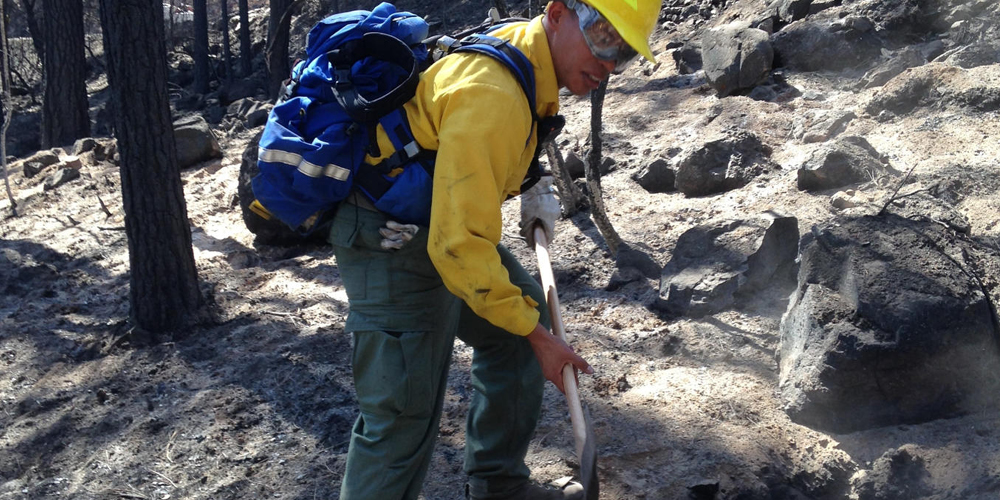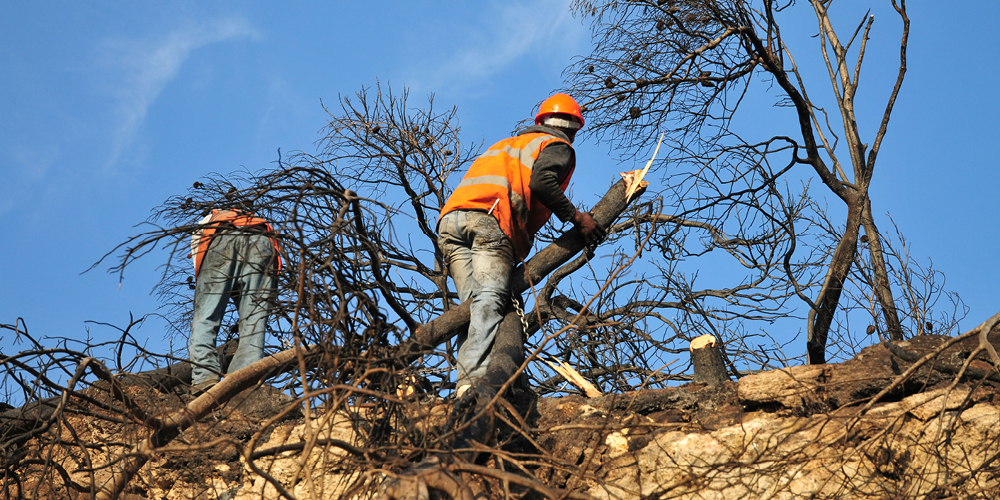Wildfires: Understanding a growing risk
ArticleMay 21, 2024
Before you plan mitigation, response and recovery efforts, a general understanding of the nature of wildfires and evolving conditions can be helpful.
Wildfire season in Canada typically occurs during the warmer summer months. But climate change has led to a gradual warming of the planet and wildfire risk that occurs year-round and in regions that historically have not faced wildfires.
"Destructive and record-setting wildland fire events have increased in frequency and severity in the past 20 years. Thousands of homes and businesses have been destroyed, tens of thousands of Canadians have been forced from their homes and many more have suffered smoky days and felt the social and economic impacts of challenging wildland fire seasons".3 The 2016 wildfire in Alberta was the costliest disaster in Canadian history, and a recent study projects extreme fire risks in Western Canada could become as much as six times more likely in this decade alone. (Fort McMurray wildfire)2
While some unpredictable contributors, including lightning strikes and acts of arson, are major factors in wildfire occurrences, the scientific consensus is that climate change will continue to result in larger, more intense fires in regions prone to them.3
So, in facing this volatile reality, businesses, communities, and individuals need to plan early and intelligently. Before making those plans, however, a general understanding of the nature of wildfires and evolving conditions is helpful.
What causes wildfires?
There are three components required for a wildfire, often referred to as the “Fire Triangle”4:
- A heat source: This can be anything from the sun to a bolt of lightning to a lit match.
- Fuel: This can be any flammable material, including dry, dead grass, leaves, and trees; and some forms of living vegetation.
- Oxygen: Fire feeds off oxygen, which increases in high winds, helping spread the fire.
Wildfires are a natural — and often essential — part of our ecosystem, but like destructive storms, their power can quickly overwhelm regions and their inhabitants. Moreover, while there are natural triggers for fires, human activity is estimated to be responsible for nearly 50% of wildland fires in Canada. 1
Human-caused wildfire triggers include:
- Campfires left unattended
- Intentional acts of arson
- Burning of debris
- Equipment use (including power lines) and malfunctions
- Discarded cigarettes
- Fireworks
Conditions that increase wildfire risks
Our ecosystem is always in a state of delicate balance and there are several factors that can adversely impact that harmony. In terms of wildfire risks, these include:
- Extreme heat
- Droughts
- Insects and disease that cause trees to die prematurely
- Deforestation
- Bad land management
- High winds
Excessive heat, droughts, insects, and disease have plagued human and animal life long before climate change was on anyone’s radar, but most of the conditions above have been impacted by or significantly contributed to the effects of climate change.
The historically warmer, drier conditions we are experiencing result in longer heat waves, increased drought, lower soil moisture content, the spread of damaging insects, and an increase in combustible fuels created by dead trees and plants.5 Deforestation (mainly caused by logging) and poor land management have resulted in an increase in wildfires in regions where historically they were very rare, notably the rainforests in the Amazon and Indonesia.
It’s also important to note that wildfires can lead to increased risks for flooding, mudslides, and debris flow. The destruction of trees and grasslands that could absorb rainfall can leave areas downhill and downstream more vulnerable to these events.6
Types of wildfires
There are three main categories of wildfire7,8:
- Ground fires ignite within the soil, feeding off organic material like plant roots and smoldering until they grow into a surface or crown fire.
- Surface fires burn in dead or dry vegetation, such as parched grass or fallen leaves or branches at ground surface level.
- Crown fires burn through the top layer of foliage on a tree. They are the most intense type of these three and often difficult to control.
Wildfires can also be defined by regions and their associated climates. “Wildfire” has widely replaced “forest fire” as common terminology for wildland fires, but “forest fire” can be useful in distinguishing fires in woodlands from those in grasslands or shrublands. The latter fires are often called “brush fires,” not to be confused with “bushfire,” the common general term for woodland and grassland wildfires in Australia.
There is a common misconception that a wildfire is like a tsunami that rolls through the forest and crashes through communities with unstoppable force, igniting everything in its path. But this is not the only way wildfires spread. Wind-driven sparks and embers can be blown kilometers away from the wildfire and ignite combustible materials well outside of the direct wildfire path. This is one of the observations from Zurich’s post-event review, of the Horse River Wildfire, better known as the Fort McMurray Wildfire. The Fort McMurray Wildfire occurred on May 3, 2016, when a wildfire burned out of control in Northern Alberta, Canada, and devastated the town. More than 2,500 homes and other structures were destroyed by the fire with an estimated financial impact of $8.9 billion – the costliest disaster in Canadian history. 2
Where are wildfire risks growing?
Evaluating wildfire risks globally is tricky and sometimes can be misleading. Frequency is a major concern in some areas, but growing severity and duration can be equally troubling indicators in regions where the overall number of fires may decrease.
It’s useful to look at regions that suffered from major, recent impacts of wildfires; the conditions that led to those fires; and what indicators may be for the future:
Canada: Fire season is getting longer in almost all areas of the nation and by 2100, it could become more than a month longer in central and eastern Quebec, and northern British Columbia.9
The United States: The 2020 wildfires wreaked havoc across California (which experienced six of the 20 largest fires in its history), Washington and Oregon. Expectations for more droughts and increasing landscape degradation mean the Western U.S. will continue to be at high risk for fires for the foreseeable future. 10 Meanwhile, the Southwest U.S. is also expected to grapple with more high-severity fires that were less characteristic of the region in earlier periods. 11
The Amazon rainforest: The previously mentioned deforestation in South America has long posed an urgent climate crisis and many scientists fear the region is at a tipping point for recovery. Reforestation efforts, like the Zurich Forest Project, are essential to avoiding fiercer fires and truly dire, global consequences. It will take many more concentrated efforts from governments, businesses and organizations around the world to bring this region back from the brink.
The Arctic: Though Arctic wildfires are not uncommon in the region’s Siberian south, the emergence of so-called “zombie fires” (smoldering, holdover fires from a previous season that can reignite) and fires in areas further north that were once considered fire-resistant is alarming scientists. The severity, frequency and types of wildfires in northern and Arctic regions have changed in recent decades due to the fact the Arctic is warming nearly four times faster than the rest of the world. 12
The areas above are by no means the only ones facing escalating wildfire challenges. 2018 saw a worrisome rise in fires across Europe, and while African wildfires (which account for some 70% of the fires in the world) have been historically more controlled and in harmony with the continent’s ecology, there are growing concerns over increased “slash and burn” strategies as global trade grows.13
Economic impacts of wildfire
When climate factors impacting wildfire risks are addressed, too often the discussion breaks down to an ecology versus economy argument. But this is shortsighted considering the deep economic costs of wildfire disasters.
With the interconnected nature of countless businesses, both domestically and globally, it isn’t hard to see why costs are not contained by state or national borders. Supply chain interruptions, rising insurance losses, and the potential impact on workforces of growing migration away from wildfire-prone regions are just some of the issues to contend with.
As with hurricanes and more extreme storms, wildfires are events that require both long-term and immediate planning. Zurich will continue making resources available to help with that planning, including the articles below offering guidance on mitigation, response and recovery actions.
References
- CIFFC Canada Report. 2022.
- Kirchmeier-Young, M.C., Zwiers, F.W., Gillett, N.P. et al. “Attributing extreme fire risk in Western Canada to human emissions.” Climactic Change. Vol. 144, issue 2. 2017.
- CIFFC Action Plan. 2022.
- “Wildfires 101.” National Geographic video. 23 October 2017.
- “Climate change increases wildfire risk.” Washington State Department of Ecology. Accessed 21 June 2021.
- Lada, Brian. “How wildfires leave communities vulnerable to flooding, mudslides for years.” AccuWeather. Accessed 23 June 2021.
- “Wildfires.” National Geographic Resource Library.
- National Park Service. “Wildland Fire Spread and Suppression.” Accessed 21 June 2021.
- Government of Canada. “Fire weather: Increases in length of fire season will affect forest ecosystems and both human health and safety.” 3 December 2020.
- Singh, Maanvi. “'Unprecedented': the US west’s wildfire catastrophe explained.” The Guardian. 12 September 2020.
- Mueller, Stephanie E., et al. “Climate relationships with increasing wildfire in the southwestern US from 1984 to 2015.” Forest Ecology and Management, Vol. 460. 15 March 2020.
- The conversation. ‘Zombie fires’ in the Arctic: Canada’s extreme wildfire season offers a glimpse of new risks in a warmer, drier future. 2023.
- Petesch, Carley. “Africa is the ‘fire continent’ but blazes differ from Amazon.” Associated Press. 28 August 2019.
The information in this publication was compiled from sources believed to be reliable for informational purposes only. All sample policies and procedures herein should serve as a guideline, which you can use to create your own policies and procedures. We trust that you will customize these samples to reflect your own operations and believe that these samples may serve as a helpful platform for this endeavor. Any and all information contained herein is not intended to constitute advice (particularly not legal advice). Accordingly, persons requiring advice should consult independent advisors when developing programs and policies. We do not guarantee the accuracy of this information or any results and further assume no liability in connection with this publication and sample policies and procedures, including any information, methods or safety suggestions contained herein. We undertake no obligation to publicly update or revise any of this information, whether to reflect new information, future developments, events or circumstances or otherwise. Moreover, Zurich reminds you that this cannot be assumed to contain every acceptable safety and compliance procedure or that additional procedures might not be appropriate under the circumstances. The subject matter of this publication is not tied to any specific insurance product nor will adopting these policies and procedures ensure coverage under any insurance policy.



